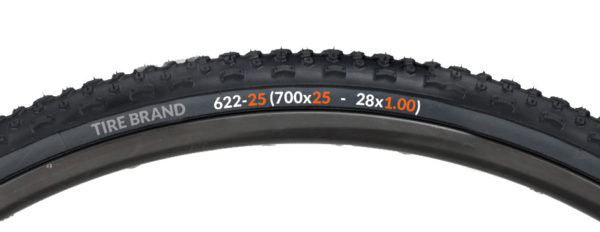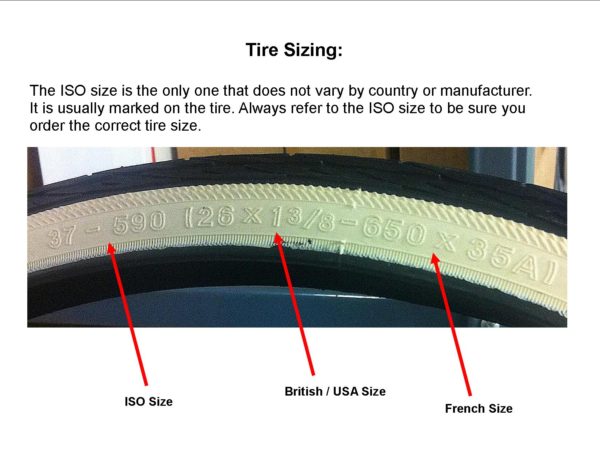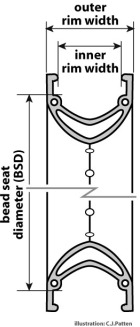When you’re looking to replace a tube or tire, it’s important to understand tire sizing. You’d think the markings on tires would make this simple, but all those numbers can be confusing. It doesn’t help that in the early days of cycling, there was no standard system for marking the sizes. Here’s what you need to know about bike tire sizes.

A Guide to Bike Tire Sizes
Traditional Sizing Systems
The traditional sizing systems were based on the measurement of the outside of diameter of the tire, so it would be listed as diameter x width. However, the evolution of tires and rims has made these measures inaccurate when it comes to compatibility. Each manufacturer had their own set of sizing standards that only applied to their bikes, so it was hard to buy tires, tubes, and wheels from different manufacturers with confidence that they would be compatible.
The ISO
To remove the headache that was trying to decipher manufacturer’s varied measurements, the International Organization for Standardization (ISO) created a system to regulate tire measurement. Most new tires will now show the ISO measurement of: width x diameter.

Tire Diameter
The most important measurement of the tire is the diameter, then the width. The actual outer diameter of the tire may vary based on the tread pattern, so the BDS (bead seat diameter) is the measurement of the inner diameter of the tire. You can find this measurement on the side wall, where you should see two numbers separated by an x (ie: 700×23 or 26×2.10). The BDS is the larger of the two numbers, listed in either inches (700) or mm (26).
Tire Width
The second, smaller number is the tire’s width. As the width increases, the tire will have more contact surface with the road, making it more stable and comfortable. As the width decreases, there is less rolling resistance or friction, and therefore is faster. Road bike tires generally come in three widths: 23c, 25c, and 28c (their width in mm). The letter at the end of a tire size is a throwback to an old French system when the letters a, b and c designated different inner tire diameters – it DOES NOT stand for cm.
When it comes to choosing width, there are two major factors at play. First is what will fit your bike and wheels, and second is what best fits your riding style for comfort and speed. Generally speaking, a width of 25mm will work for most riders. They are widely recognized as the best compromise between comfort, weight and performance. Racers will opt for a smaller width, or if you’re tackling rougher roads, going up to 28mm may be the best option.
In most cases, if you’re replacing a tire you can just look at the numbers on the old one and match them. However, this can become an issue if the old tire isn’t available, or if you’re not sure which number to go off.
For more on bike tire sizing and ensuring you choose the right one, check out the video below.